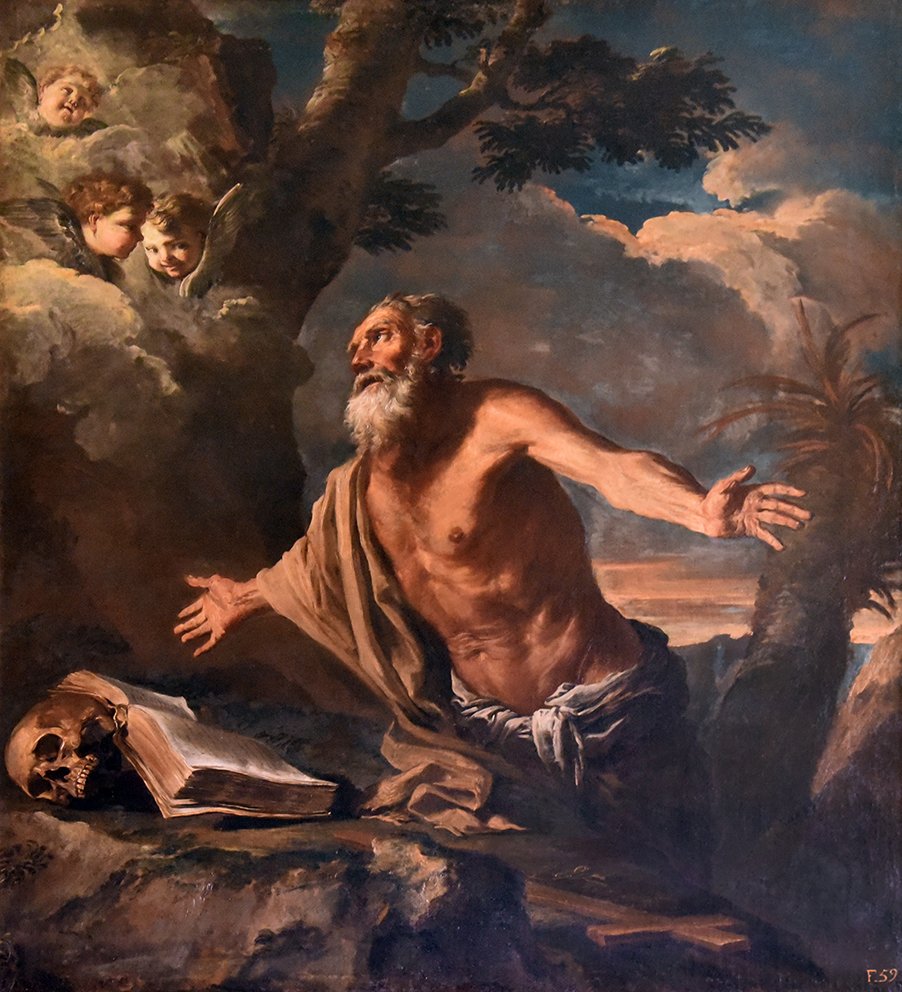
St Jerome, Half Length, Kneeling In a Landscape
Late 17th C
Oil on canvas, 69 ins by 59 1/2 ins
Collection Details
Wrongly said by Arslan to have been in the Palazzo Colonna, Rome (see below); by 1686 in the Barberini collection, whence it was bought by Colnaghi in 1964 and sold to Lord Faringdon.
Literature
Lady Morgan, Life and Times of Salvator Rosa, 1824, ii, p. 373; W Arslan, ‘Opere Romane di Pier Francesco Mola’, Bollettino d’Arte, viii, 1928, pp.74, 80, fig.19; R Cocke, Pier Francesco Mola, 1972, pp.41–2, 44–5, No.6, pl.37; M Aronberg Lavin, Barberini Inventories, 1975, p.411: vii. Inv.86 (404).
Exhibition Details
Colnaghi, London, Old Masters, 1964, No.13.
Background
Universally accepted in modern times as a major late work by the eclectic Roman artist, P F Mola (1612–66), this picture must now be considered the masterpiece of his pupil, G B Pace, hitherto chiefly known as a copyist working for the Chigi (cf I Faldi, Arte Antica e Moderna, 1966, pp.147–50). It would appear to have been acquired or commissioned by Prince Maffeo Barberini (1631–85) sometime between his last inventory ad vivum, c.1680, and his death, since it only appears in his posthumous inventory of 1686, in the Palazzo alle Quattro Fontane, as: ‘Un quadro p[er] alto con S. Girolimo, con le braccia larghe, che mira il Cielo, con tre Serafini alto p[alm]i 8. largo 7 incirca, con cornice liscia, noce, e’oro, mano di Gio: Batta Pace.’
The close relationship of the St. Jerome to Mola’s ex-Chigi St. Bruno of c.1665 has been pointed out by Arslan, although the pose of the saint is derived from another, lost, St. Bruno by Mola, known from a preparatory drawing, a studio version and an engraving (Cocke, pl.133 and catalogue nos. 71, L.67). The rich, brownish tones are typical of Mola during these years in Rome, but the evident rapidity of execution and roughness betray the influence of Salvator Rosa, to whom it was indeed attributed when an entail was established around 1816 and Fidecommesso numbers were painted on the core of the Barberini collection.
The Trustees of the Faringdon Collection 25.
All rights reserved.
